The Curse of Oak Island- Season 8, Episode 1: Remote Control
The following is a plot summary and analysis of the Season 8 premiere of the History Channel’s TV series The Curse of Oak Island.
[SPOILER ALERT!!!]
Plot Summary
The narrator begins the 2-hour-long Season 8 Premiere of The Curse of Oak Island by describing how the 2020 Oak Island treasure hunt was hampered from the outset by the US-Canada border shutdown resultant of the COVID-19 pandemic. “It is against this grim backdrop,” he says, “that operations on Oak Island have ground to a halt, at least until the island’s principal owners, brothers Rick and Marty Lagina, along with their co-workers and partners, can figure out how, if at all, they can proceed.”
Next, Marty Lagina, Craig Tester, Alex Lagina, and Jack Begley sit down around a boardroom in Marty’s office in Traverse City, Michigan, for a morning meeting on June 17th, 2020. The treasure hunters discuss the implications of the border shutdown on their treasure hunt, and lament that, on its account, they will be unable to physically return to Oak Island for some time.
The American treasure hunters proceed to Skype with some of their fellow Canadian and international treasure hunters- namely Laird Niven, Scott Barlow, Gary Drayton, Terry Matheson, Billy Gerhardt, Tom Nolan, Paul Troutman, Dan Henskee, Dr. Ian Spooner, Charles Barkhouse, Steve Guptill, and Doug Crowell. When Marty Lagina asks about the regional COVID-19 situation in the Oak Island area, Tom Nolan explains that Canada’s Maritime Provinces of Nova Scotia, New Brunswick, Prince Edward Island, and Newfoundland and Labrador have been formed into what has been called the “Atlantic Bubble”, in which residents are allowed to travel freely without the obligation to self-quarantine upon their return home. Marty then declares that the Canadian treasure hunters will have to take charge of operations on the island until the US-Canadian border reopens.
Next, the treasure hunters discuss their plans for the upcoming season.
Dr. Ian Spooner reveals that he would like to investigate a potential anomaly in the southeastern corner of the Oak Island swamp, which he discovered when comparing old aerial photographs of the wetland to the seismic data recovered in Season 7.
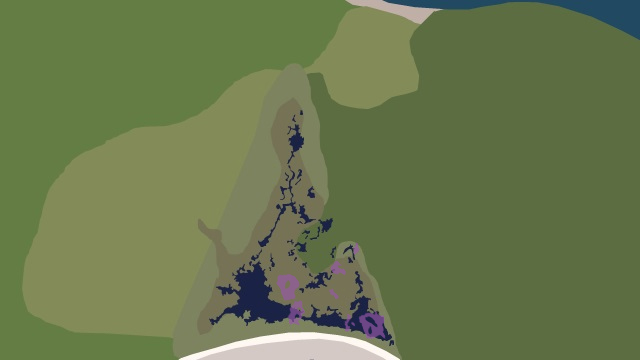
Gary Drayton discloses that he has been shopping around for metal detectors, and has come across a piece of deep scanning equipment he would like to purchase and employ on the island. This scanner not only picks up metal artifacts, but can also detect the presence of underground cavities up to a depth of 60 feet.
Charles Barkhouse then expresses a desire to have a diver re-explore the cavity at the bottom of Borehole C1, the shaft which he originally prescribed, in an effort to find the shiny gold-coloured object first glimpsed there through the use of an underwater camera in Season 3, Episode 13.
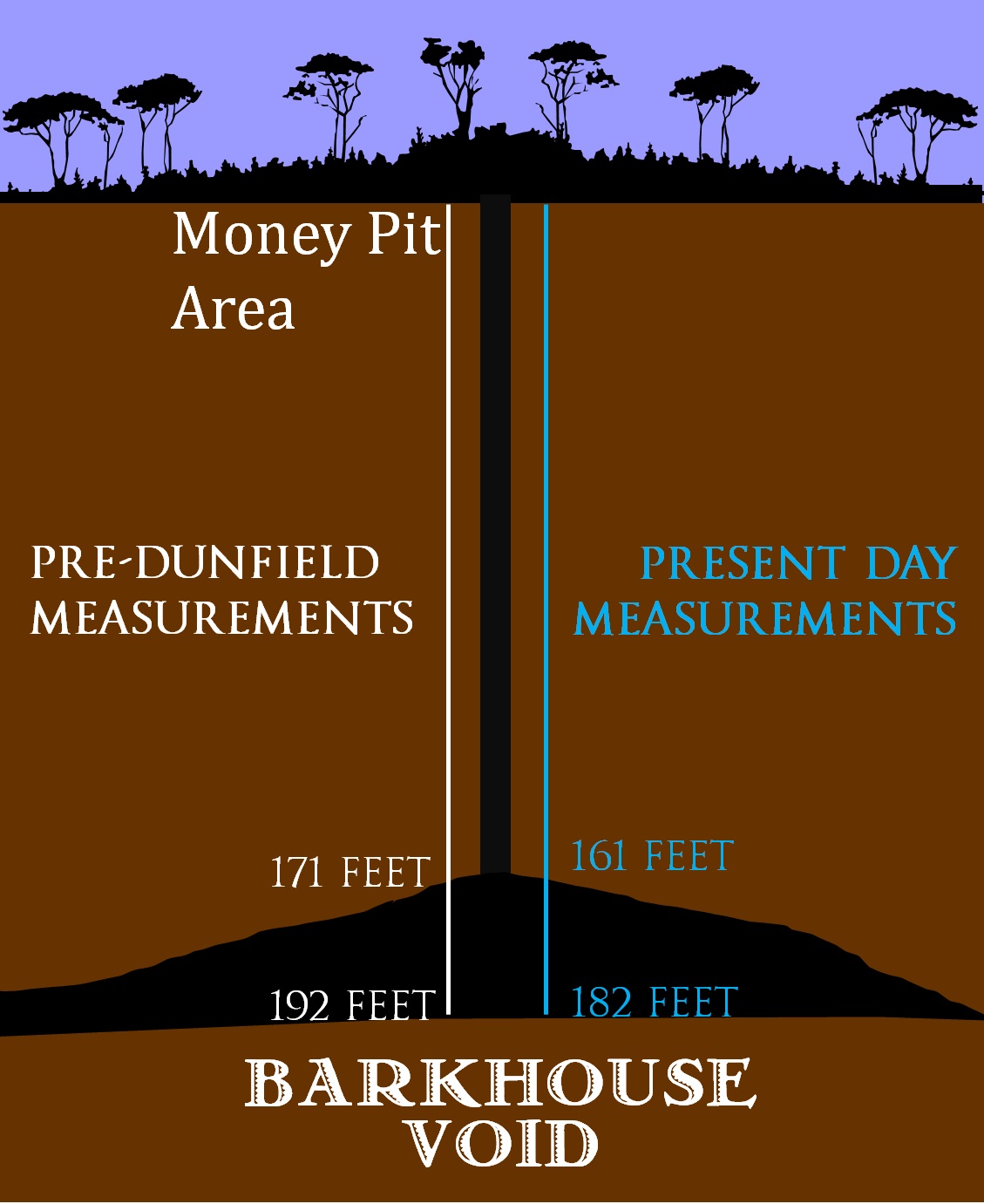
Next, Doug Crowell explains that he spent the spring of 2020 poring over the old files tucked away in the home archive of the late Dan Blankenship. One of the more interesting items he unearthed was a survey map drawn by Fred Nolan when he and Blankenship were working together. Another item of interest was the Barringer Survey, a geophysical study of Oak Island’s subterranean makeup conducted in 1988. Both of these documents indicated the presence of an underground tunnel on Oak Island’s Lot 15, while the Barringer Survey indicated the presence of another tunnel leading from the Money Pit to Lot 15. Intriguingly, two parallel rock walls sit on the line of the supposed tunnel suggested by both surveys, apparently leading into the hill on the slopes of which they lie.
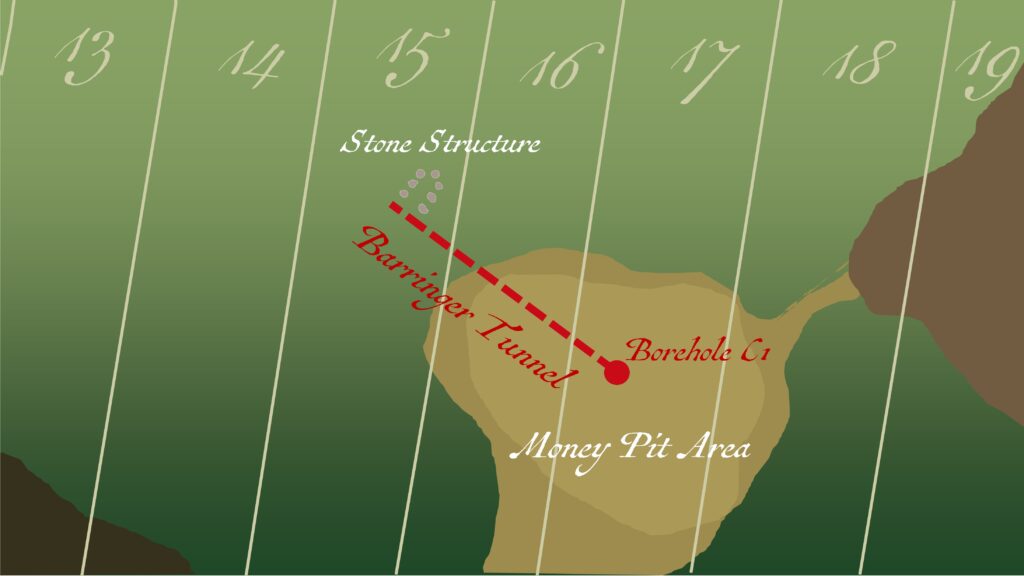
The Barringer Survey also indicated the presence of four underground deposits of non-ferrous metal (ex. gold, silver, and copper) on Oak Island. Inexplicably, neither the mysterious metal targets nor the supposed Lot 15 tunnels were investigated in a follow-up operation.
Rick Lagina concludes the Skype meeting by praising the crew’s enthusiasm and expressing his wish that he could be back on Oak Island.
Following the meeting, Doug Crowell and Charles Barkhouse, two Canadian treasure hunters with access to Oak Island, meet with professional diver Mike Huntley at Borehole C1. Although Huntley, who has dived to the bottom of C1 several times in the past, has been hired to make another manual inspection of the cavern at the shaft’s bottom, he first decides to inspect C1 with a High Definition Multi SeaCam, a high-quality underwater video camera. With the help of two assistants, the diver lowers the camera into the shaft.
Back in Traverse City, Rick Lagina, Marty Lagina, and Craig Tester have a Skype meeting with David Irving, Matt Kingston, and another representatives of Irving Equipment Ltd. The contractors discuss the possibility of the Big Dig- the sinking of an enormous shaft in the Money Pit area. Kingston hints that this tremendous operation may take place in “a couple years”.
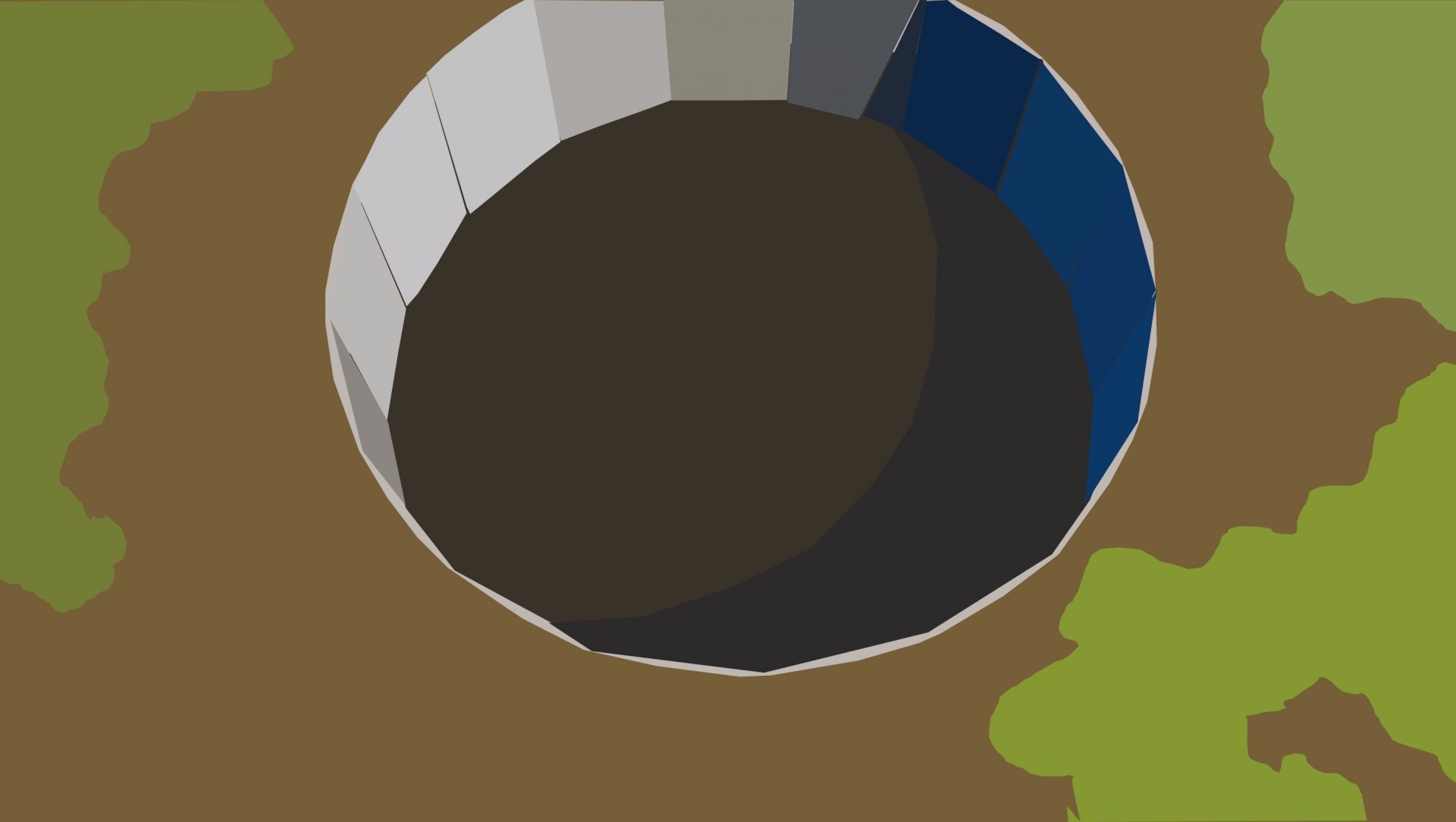
Next, using augmented reality technology, the Irving executives show the treasure hunters an animation of the Money Pit area in which caissons are sunk in a honeycomb pattern, an arrangement which would allow for the sinking of more caissons per area than the square grid pattern in which drillholes have been sunk in previous years. David Irving informs the treasure hunters that shafts sunk in this manner could be reinforced with temporary casings which would allow for future re-investigations. Marty Lagina agrees to consider Irving’s honeycomb grid proposal.
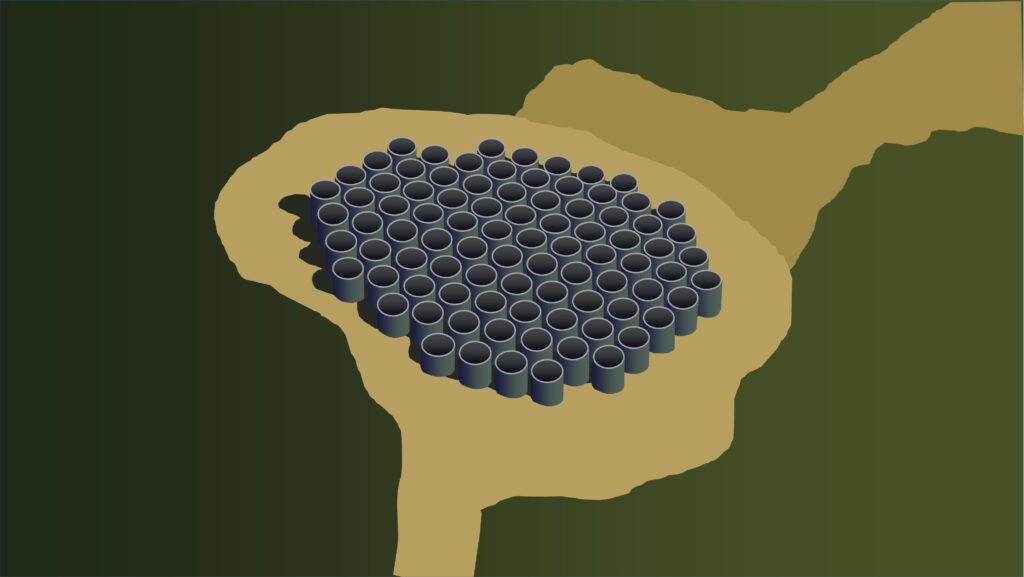
Back on Oak Island, Charles Barkhouse, Doug Crowell, and Mike Huntley resume their underwater camera operation in Borehole C1. As the SeaCam descends deeper into the caisson, Charles and Doug, who are watching the camera’s live feed on a screen at the surface, make some favourable remarks regarding the crispness of the video quality.
When the camera reaches the cavity at the bottom of the shaft, Huntley’s assistants maneuver it so that it passes over the cavern walls. During this process, the camera alights upon a yellow-coloured triangular anomaly in the anhydrite, evoking both the shiny, gold-coloured object discovered in Season 3, Episode 13, as well as the mysterious ghost hits which Huntley’s hand-held metal detector received during the diver’s manual explorations of the cavern in Season 4, Episodes 9 and 10, and in the Season 5 premiere. One foot below the triangular object, the camera picks up another yellow anomaly in the cavern wall, this one circular and much smaller than the first. Then, on the wall of the cavity opposite these anomalies, the treasure hunters locate a third golden speck.
Later that afternoon, back in Marty Lagina’s Traverse City boardroom, Rick and Marty Lagina, Craig Tester, Alex Lagina, and Jack Begley have a video conference call with their fellow Canadian treasure hunters. Doug Crowell shows the Americans images of the three yellow anomalies which Mike Huntley discovered in the C1 cavity. Tester wonders aloud whether the anomalies might be natural features. Crowell then discloses that geologist Terry Matheson, upon being consulted earlier that day, claimed that there are “no known natural emplacement of minerals that look like gold in anhydrite”, of which the bedrock of Oak Island’s eastern drumlin is comprised. Doug Crowell characterizes the new finds as “intriguing and perplexing”, and Marty Lagina suggests that they ought to be investigated. At the end of the meeting, Mike Huntley suggests that the gold-coloured anomalies are the metallic objects which set off his hand-held metal detector during his previous dives in Borehole C1.
Two days later, Charles Barkhouse, Doug Crowell, and Scott Barlow welcome professional divers Bob Ritcy and Tyler Newton to Oak Island, Mike Huntley being unavailable. Newton, we learn, has been tasked with searching for the three gold-coloured anomalies picked up by the HD Multi SeaCam at the bottom of Borehole C1. As the members of the dive team make their preparations, the Canadian treasure hunters Skype with the Lagina brothers, Craig Tester, Jack Begley, and Gary Drayton so that they can observe the operation remotely. Once the preparations are complete, Newton, assisted by dive master Brad Conrad, who instructs him from a control room on the surface, slowly descends into C1 in a cylindrical cage.
The cage descends to a depth of 40 feet without incident, whereupon a trap door on its bottom is opened, allowing Tyler Newton to slip out and continue the dive manually. Newton sinks deeper into the murky water, a video camera attached to his helmet allowing the treasure hunters on the surface to see from his point of view in real time.
The diver reaches the bottom of the caisson and swims into the cavity below, where he begins to examine the cavern wall. After remarking that the anhydrite has “lots of areas that reflect” light, Newton comes across a particularly shiny object embedded in the rock. He attempts to pry the object loose with a knife but only succeeds in scraping flakes of some bright white substance from it which crumble into powder in his gloved hands. Newton looks away from the object for a moment, then snaps his head back towards it, cursing. “He just took something out of the wall,” Charles Barkhouse declares, as we watch, through Newton’s eyes, a round, flat object flutter down through the water and disappear into the gloom of the cavern’s bottom. “That looked like a coin falling,” Gary Drayton exclaims.
Unfortunately, Tyler Newton, for reasons unknown, is not authorized to dive to the cavern floor to retrieve the mysterious coin-like object. After chiseling more samples of shiny material from the cavern wall and placing them in a bag, the diver, on Conrad’s command, begins his ascent.
Newton returns to the surface without issue and enters a decompression chamber which has been prepared for him in order to prevent his developing ‘the bends’, or decompression sickness. While the diver undergoes this routine treatment, Charles Barkhouse examines the samples he chiseled from the walls of C1. Most of the samples prove to be flakes of anhydrite, one of which bears shiny crystallization. “C1 hasn’t really revealed its secrets, has it?” Marty concludes disappointedly. “The island wins again,” Scott Barlow concedes.
In a later interview, Rick Lagina expresses interest in the coin-like object which fell to the cavern bottom, which Tyler Newton was unable to retrieve. He suggests that the team might be able to retrieve the object through use of an airlift, which Oak Island Tours Inc. has successfully used in other shafts in the past.
Three days after Tyler Newton’s dive, regulations regarding Canada-USA travel are loosened, allowing certain specially-approved Americans to visit Canada provided they self-isolate for two weeks upon their arrival in the Great White North. In light of this new development, Rick and Marty Lagina, Alex Lagina, and Peter Fornetti apply for and receive permission to travel to Canada. The treasure hunters fly to Halifax and drive to a house somewhere in Nova Scotia, where they prepare to wait out their fourteen-day quarantine.
Shortly after the Laginas’ arrival in Canada, the Oak Island crew has a meeting in the War Room, the quarantined Americans in attendance via video conference. Laird Niven informs the team that a “very experienced archaeologist” named David MacInnes, who happens to be a direct descendant of Money Pit co-discover Daniel MacInnes, will lead the upcoming search for the potential tunnel on Oak Island’s Lot 15. MacInnes will be assisted by Aaron Taylor, an archaeologist who appeared in Season 7, Episode 18 of The Curse of Oak Island.
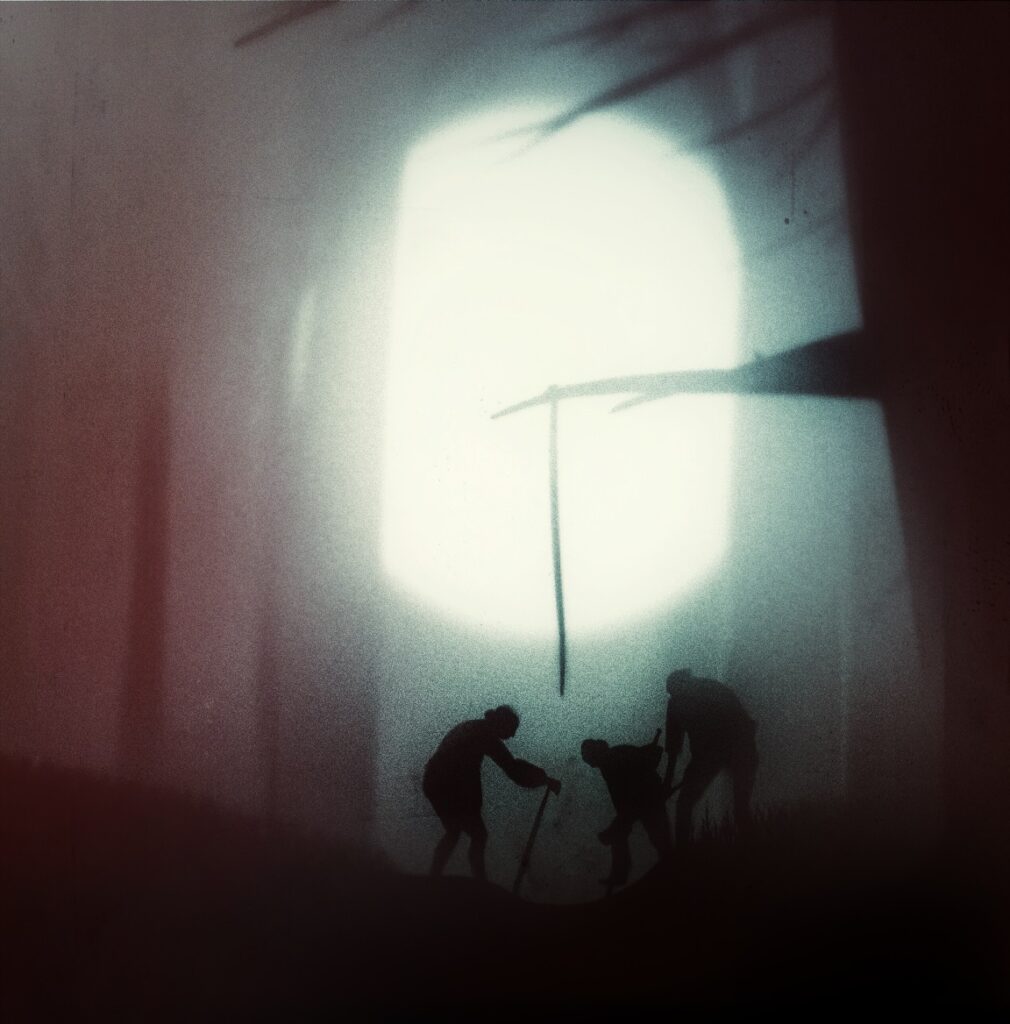
Dr. Ian Spooner then reminds the crew that he plans to investigate the aforementioned area of interest in the southeastern corner of the Oak Island swamp, which he identified when comparing an old photograph of the marsh with seismic survey data collected in Season 7. He informs his fellow treasure hunters that the anomaly in question is located ten feet below the swamp’s surface, and expresses his belief that if any artifacts are to be found in the swamp, they will likely be discovered there. Doug Crowell then explains that this anomaly evokes a supposed shaft discovered years ago in the swamp’s southeast corner by Fred Nolan, which was alluded to several times in previous episodes.
Later that day, Laird Niven meets with fellow archaeologists Aaron Taylor and David MacInnes on Oak Island’s Lot 15, at the site of the aforementioned potential tunnel indicated on one of Fred Nolan’s survey maps. Taylor and MacInnes have already dug a very shallow preliminary trench in the area. MacInnes remarks that the soil appears to have been previously disturbed, and discloses that he and Taylor found some old nails and charcoal a short distance below the surface while digging their trench. “It could be several things,” he hypothesizes. “It could be [that] people searching for the treasure may have come across this stone feature and found it interesting, and dug it up, and thrown the spoil up here.” Niven examines the nails that the archaeologists have unearthed and remarks that they appear to have been machine-made.
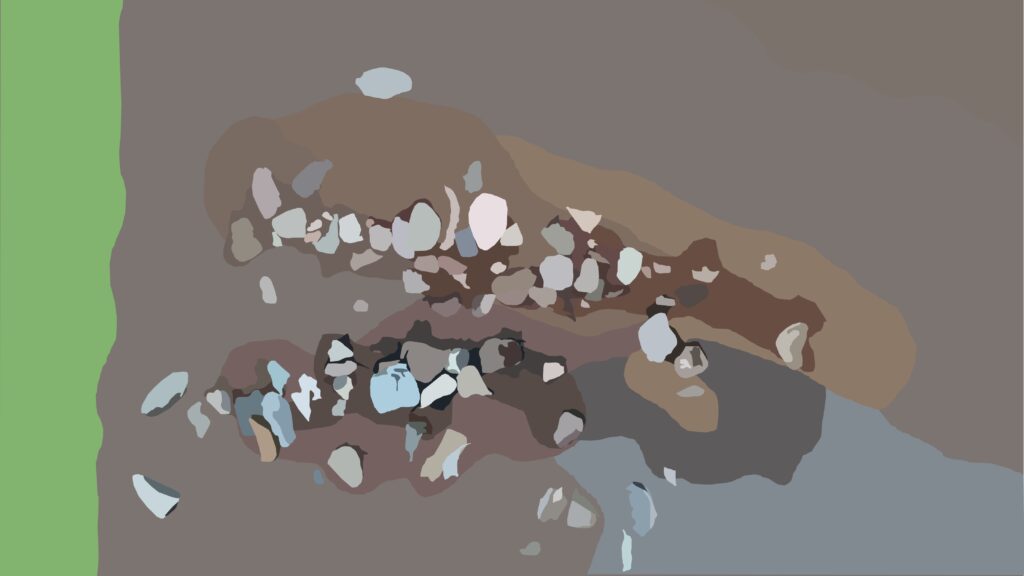
Niven proceeds to excavate the trench with a trowel and discovers a piece of slag, a byproduct of smelting of iron ore. This is the second piece of slag to be discovered on Oak Island, the first having been found in Borehole H8 in Season 6, Episode 13. In light of this find, David MacInnes suggests that the nearby stone walls may constitute the remains of an iron foundry. “The question… in my mind… is ‘why would there be a blacksmith shop here?’”
The next day, the Fellowship of the Dig meets in the War Room, the American quarantinees once again in attendance via Skype. David MacInnes informs the treasure hunters of his, Laird’s, and Aaron Taylor’s recent discoveries on Lot 15, and opines that the strange hillside stone walls there are not the remains of a house or barn, but are certainly artificial, and possibly the ruins of a forge. MacInnes then discloses that blacksmithing expert Carmen Legge had the opportunity to examine the structure and concluded that it is an English tar kiln, dated from 1550-1620, in which wood was converted into tar. “Well, that has to be government or military,” Marty Lagina says. Laird Niven chimes in that the recent Lot 15 discoveries and Legge’s tar kiln theory may link the Paved Wharf (unearthed throughout Season 7) with some of the crew’s previous discoveries at Smith’s Cove.
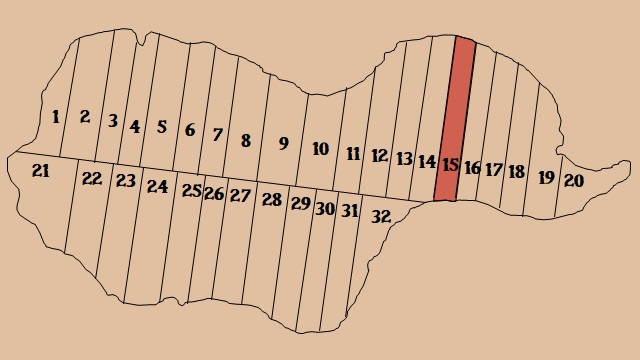
Three days later, Jack Begley and Gary Drayton, who have just completed their own 14-day quarantines, drive to Oak Island and head straight to Lot 15, carrying Gary’s new OKM eXp 6000 Metal Detector with them. After meeting Laird Niven, the treasure hunters unpack Gary’s new device and begin scanning in the vicinity of the stone walls.
Meanwhile, Doug Crowell and Steve Guptill head to the Money Pit area. Using a GPS device, the treasure hunters locate and drive stakes into various points of interest indicated by the Barringer Survey (i.e. the hypothetical line of the Barringer tunnel). When all the states are driven home, the imaginary line they create appears to run straight towards Borehole C1. Guptill suspects that, if they were to run the line in the opposite direction, it would intersect the rock walls on Lot 15.
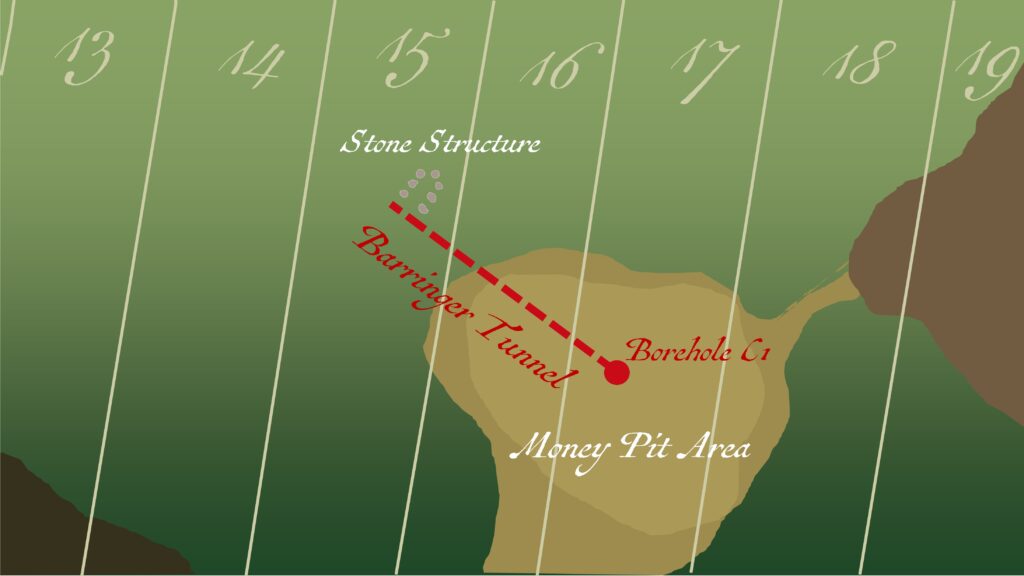
The next day, the Fellowship of the Dig meets in the War Room, many of the treasure hunters in attendance via video conference. Steve Guptill shows the treasure hunters a diagram in which the data from the Barringer Survey is overlaid atop other survey data he has collected on Oak Island over the years. Intriguingly, the diagram shows that the stone walls on Lot 15 is located exactly 500 feet from both the Paved Area and the Money Pit area. Gary Drayton proposes that he scan the area between these features with his new metal detector- a suggestion with which his fellow treasure hunters wholeheartedly agree.
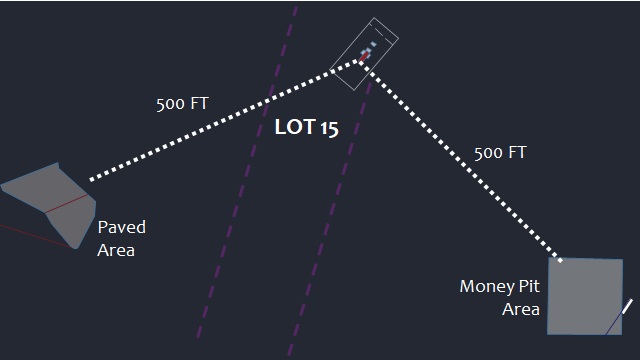
Later that day, Dr. Ian Spooner meets with diver Tony Sampson at the Oak Island swamp. Dr. Spooner informs Sampson of the anomaly he identified in the swamp’s southeastern corner, and tells him that he would like to conduct a sonar scan of the area in order to shed more light on it. Spooner, equipped with a SyQwest HydroBox Echo Sounder sonar device, proceeds to row into the swamp in a dingy, while Sampson dons his wetsuit and wades into the wetland. Sampson guides Spooner’s dingy overtop of the anomaly, which the sonar device indicates is some sort of 1-2-metre-tall wall buried beneath two metres of mud.
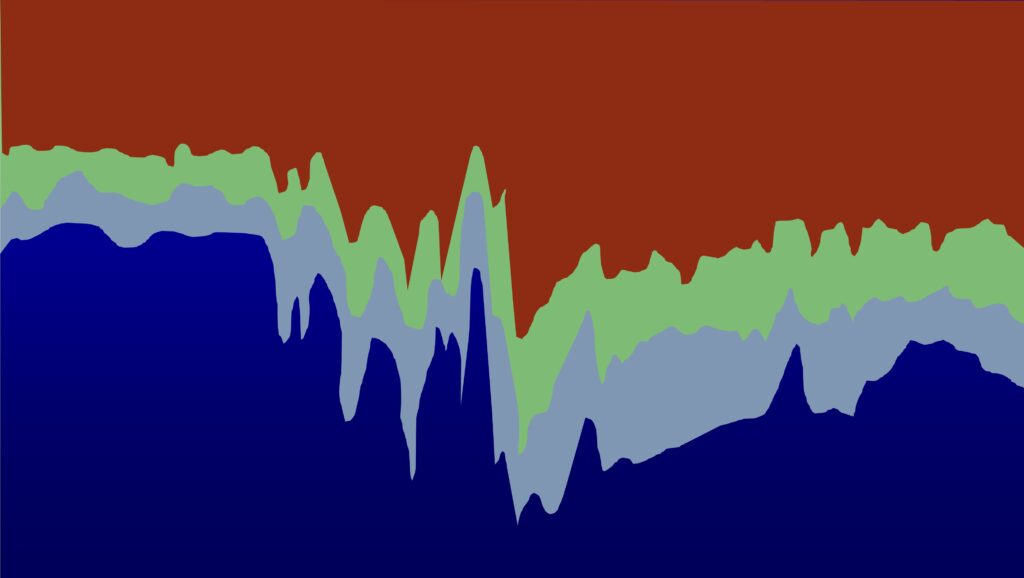
Meanwhile, back on Lot 15, archaeologists Niven, MacInnes, and Taylor resume their excavation of the twin walls while Gary Drayton and Jack Begley resume their scanning operation. While walking through the woods with his OKM eXp 6000 about 100 feet west of the stone walls, Gary Drayton stumbles upon a ring of cracked stones which he suspects is unnatural. The treasure hunters agree to leave the stone formation as it is until Laird Niven and the other archaeologists have a chance to examine it.
Drayton and Begley wrap up their scanning operation and begin looking through the data they collected. “There’s a hell of a lot of metal in this area,” says Drayton of the data in a later interview. “A lot of iron, but even more important, there’s some non-ferrous targets. Well, I’m a treasure hunter- that’s probably gold and silver coins.”
Having located several potential areas of interest, Drayton and Begley return to Lot 15, the former equipped with his regular CTX 3030 metal detector, and begin to scan for metal targets. The pair quickly unearths an old broken axe head. “Just the weight of it tells me this is really old,” Drayton says as he hefts the artifact, before identifying it as a ship’s rigging axe. Shortly thereafter, the treasure hunters discover a very old coin with a square hole punched through its middle, which Drayton declares to be a “top-pocket find”. In a later interview, Drayton expresses his belief that the coin is not European, but rather a product of somewhere “much more exotic”, and tentatively dates it to the 17th or 18th Century.
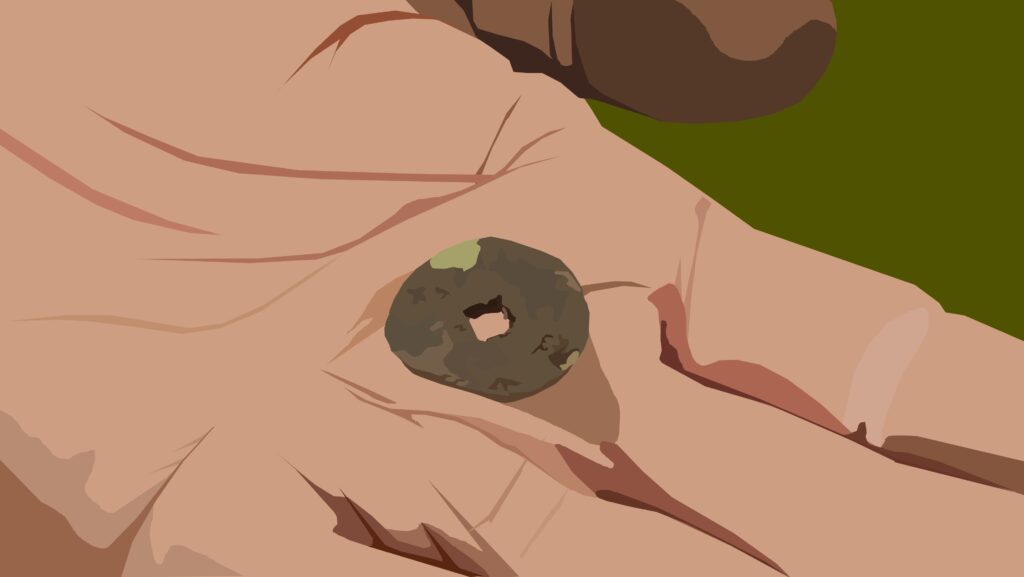
Following their metal detecting operation, Gary Drayton and Jack Begley head to the Oak Island Research Centre, where they find Charles Barkhouse. Gary and Jack inform Charles that they have made a very interesting discovery but refuse to disclose the details, suggesting that they call up the Laginas first and break the news to everyone at the same time. The three treasure hunters proceed to do a video conference call with Rick and Marty Lagina, Alex Lagina, and Peter Fornetti. Gary Drayton teases the Laginas with the disclosure that he and Jack have made an important “top-pocket find”, but, similar to his treatment of Charles Barkhouse, refuses to reveal the details until the entire Fellowship has physically assembled, stating that the discovery “is worth waiting for”.
At the end of the episode is a short memorial to Kevin Burns, the producer of The Curse of Oak Island and the popular History Channel TV series Ancient Aliens, who died of cardiac arrest on September 27, 2020. Surrounding a portrait of Burns are the words:
In Memoriam
Kevin Burns
1955-2020
You Showed us the World and Beyond
Rest in Peace
Analysis
The Dives in Borehole C1
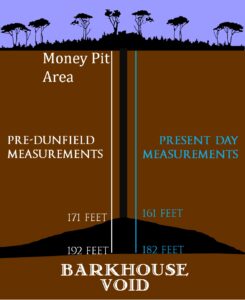
In this episode, the Fellowship of the Dig hires professional diver Tyler Newton to dive to the cavity at the bottom of Borehole C1 in an effort to retrieve the elusive shiny, gold-coloured object first glimpsed back in Season 3, Episode 13, through the use of an underwater camera. Before Newton makes his dive, professional diver Mike Huntley, who has been to the bottom of C1 several times in the past, lowers a HD Multi SeaCam to the bottom of the shaft. The camera picks up three yellow spots on the cavern’s anhydrite wall which the treasure hunters deem worth investigating.
Tyler Newton subsequently dives to the bottom of C1 and chisels several pieces of shiny material from the cavern wall. One of these pieces, which resembles an old coin, eludes the diver’s grasp and sinks to the bottom of the cavity, where Newton is unable to retrieve it. Upon Newton’s return to the surface, the samples which the diver extracted prove to be flakes of anhydrite, some of which bear reflective crystallization.
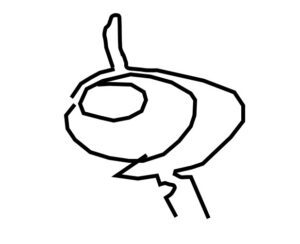
As mentioned, Tyler Newton is not the first diver to explore the cavity at the bottom of Borehole C1. Back in Season 4, Episode 9, professional wreck diver John Chatterton made a preliminary dive to C1 cavern, in which he located what he thought might be the entrance of a tunnel. At the end of that same episode, Mike Huntley dove to the bottom of C1 and, using a hand-held metal detector, discovered what appeared to be three metal objects embedded in the anhydrite wall, one of them apparently a large, smooth, block-like object. His vision impaired by floating silt, Huntley was unable to visually locate the metal objects and returned to the surface. Immediately upon Huntley’s ascension, John Chatterton dove down C1 with a hand-held metal detector, but was unable to find any trace of metallic objects in the cavern wall. The diver also determined that the potential tunnel he had discovered during his earlier dive was a natural fissure.
Huntley dove on C1 a second time in the Season 5 premiere of The Curse of Oak Island. While exploring the C1 cavern during this dive, Huntley’s metal detector once again got several ‘hits’ indicating the presence of some metallic object embedded in the anhydrite wall. After vainly struggling to chisel one of these objects loose, Huntley, at personal risk, exceeded his allotted dive time in order to stuff a bag full of sediment from the cavern floor. When he returned to the surface, the sediment he collected contained no trace of the mysterious shiny objects indicated by the visual probe.
The Barringer Tunnel
In this episode, Doug Crowell revealed that, in the spring of 2020, while examining the contents of Dan Blankenship’s personal archive, he came across two interesting documents, one of them an old survey map drawn by Fred Nolan, and the other the report of the Barringer Survey, a geophysical study of Oak Island’s subterranean makeup commissioned by Triton Alliance in 1988. Both of these documents indicated the presence of an underground tunnel on Oak Island’s Lot 15, while the Barringer Survey indicated the presence of another tunnel leading from the Money Pit to Lot 15. In this episode, Steve Guptill and Doug Crowell determine that the latter feature, dubbed the “Barringer Tunnel”, appears to run from Borehole C1 to a mysterious pair of stone walls which run into a hill on Oak Island’s Lot 15.

The Anomaly in the Swamp’s Southeast Corner
In this episode, geoscientist Dr. Ian Spooner declared that he identified a potential anomaly in the southeastern corner of the Oak Island swamp after comparing old photographs of the wetland with seismic survey data collected in Season 7.

Dr. Spooner is not the first treasure hunter to identify an area of interest in the southeastern corner of the swamp. During a War Room meeting in Season 1, Episode 3, Rick Lagina and Dave Blankenship described how, during a previous investigation, a smooth 3’x8’ rock and a tunnel connecting the swamp to the ocean were discovered in the swamp’s southeastern corner.
In this episode, Doug Crowell explains that Fred Nolan, years ago, discovered what he believed to be a shaft in this same area.
In Season 2, Episode 8, GPR experts Pat Campbell and Matt Savelle conducted a ground penetrating radar scan of the southeastern corner of the swamp with a MALA RTA system and picked up indications of a flat surface at the swamp’s bottom. If the Fellowship of the Dig conducted any follow-up excavation of this anomaly, it was not documented in the show.
In Season 6, Episode 21, theorist Chris Donah presented his hypothesis involving a Freemasonic star map which he believed indicated areas of interest on Oak Island. On Donah’s map, the star Spica lay overtop of the swamp’s southeastern corner. Donah expressed his belief that the treasure hunters will find a “back door to the Money Pit” at this location.
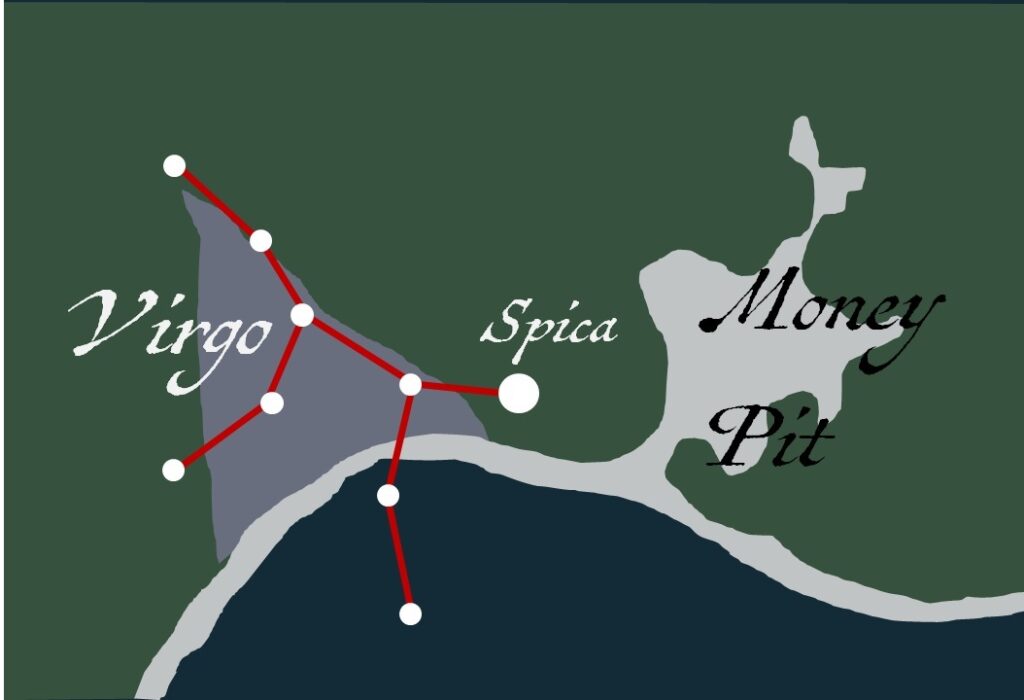
The Tar Kiln
In this episode, we learned that blacksmithing expert Carmen Legge, upon examining the strange stone walls on Oak Island’s Lot 15, identified the structure as a 400-year-old old tar kiln. This diagnosis evokes the theory laid out by Joy A. Steele in her and co-author Gordon Fader’s 2019 book Oak Island Mystery Solved: The Final Chapter.
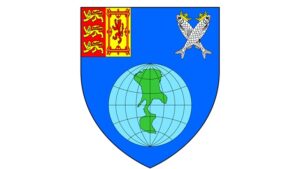
In her book, Steele argues that Oak Island served as a secret manufacturing centre for “naval stores”, or ship-related materials- specifically pine tar intended for use as ship caulking- from 1720-1722. Steele contends that this clandestine operation was conducted by members of the South Sea Company, a British joint-stock company which enjoyed a monopoly on the trans-Atlantic slave trade in the early 1700s. Steele argues that there was never any treasure buried on Oak Island, and that the Money Pit was a natural sinkhole which the Company men converted into a tar-producing ground kiln. She attributes the mysterious lights which 18th Century settlers saw flickering on the island in the dead of night to the fires which burned in Oak Island’s ground kilns, and hints that the two fishermen whom legend says rowed out to the island to investigate the lights in 1720 may have been killed by Company men who hoped to keep their enterprise secret.
The Coin with the Square Hole
In this episode, Gary Drayton and Jack Begley discovered an old coin with a square hole punched through it on Oak Island’s Lot 15. An enthusiastic Drayton declared the artifact to be a “top pocket find”, or a discovery of great significance, and refused to show it or reveal its nature to the other treasure hunters until all of them were assembled on the island. Drayton tentatively dated the artifact to the 17th or 18th Century, and cryptically suggested that it was not European, but rather a product of somewhere “much more exotic”.

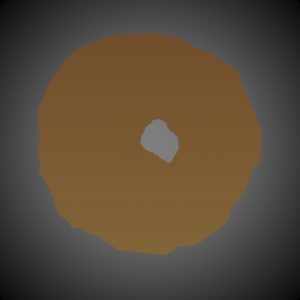
This artifact vaguely resembles an old token discovered in muck withdrawn from the swamp during a draining operation conducted in Season 6, Episode 21. Gary Drayton tentatively identified the artifact as a 17th or 18th Century coin through which some disgruntled North American colonist punched a hole in protest of the reigning monarch.
Drayton’s cryptic suggestion that the perforated coin discovered on Lot 15 constitutes a piece of currency minted in some exotic country, coupled with the coin’s strange appearance, strongly hints at some sort of Chinese connection with the Oak Island mystery. Throughout China’s long and turbulent history, from the ancient Warring States Period which preceded the formation of Chinese first empire until the early years of the Republic of China in the 1910s, most Chinese coins were round coins with square holes through their middles. The holes allowed the coins to be threaded onto rods for easy counting and storage, and onto strings for easy handling.
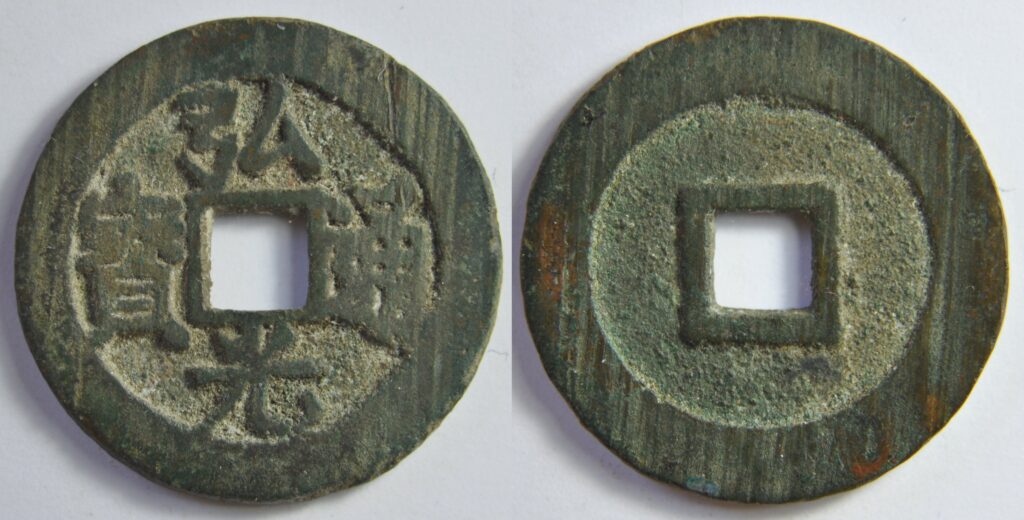
If the coin from Lot 15 indeed proves to be Chinese, it would bolster the Spanish theory, since members of the 17th and 18th Century Spanish Empire traded extensively with Ming and Qing China via the Philippines, which, in those days, was a colony of Spain.
The coin’s possible Chinese origin also evokes a more exotic (if less likely) Oak Island theory which this author has personally considered, for which there are several tantalizing pieces of evidence:
The Chinese Theory of Oak Island

In the early 1400s, during the reign of the Ming Dynasty, China’s so-called ‘Yongle Emperor’, or the Emperor of Perpetual Happiness, launched seven spectacular expeditions, called ‘treasure voyages’, to various maritime kingdoms west of China, from the Khmer Empire of present-day Cambodia to the Malindi Kingdom of present-day Kenya. Although Chinese envoys and merchants had regularly sailed to northeastern Africa and Arabia by way of the Indian Ocean since at least the reign of the Tang Dynasty, which ruled China in the midst of Europe’s Dark Ages, the Ming treasure voyages of the early 1400s constituted the largest and most impressive Chinese ambassadorial expeditions to the so-called ‘Western Sea’ at that time.
The purpose of the Ming treasure voyages was to secure tribute from the various kingdoms that bordered the Indian Ocean and solidify China’s self-styled status as the Zhong Guo, or ‘Middle  Kingdom’, around which the world revolved. In order to effect this end, the treasure fleet would carry extravagant imperial gifts to the kingdoms in question, the magnitude of its ships and the quantity of its sailors tacitly demonstrating China’s superiority to the inhabitants of these foreign lands. In preparation for this ambassadorial enterprise, the Chinese emperor commissioned the construction of around 60 colossal treasure junks said to measure 138 metres in length and 56 metres in width, each of them crewed by several hundred to a thousand sailors. Legend has it that half the trees in southern China were felled to supply the wood for the emperor’s armada. The Yongle Emperor appointed his favourite courtier, Zheng He, a Muslim eunich from the Mongol-turned-
Kingdom’, around which the world revolved. In order to effect this end, the treasure fleet would carry extravagant imperial gifts to the kingdoms in question, the magnitude of its ships and the quantity of its sailors tacitly demonstrating China’s superiority to the inhabitants of these foreign lands. In preparation for this ambassadorial enterprise, the Chinese emperor commissioned the construction of around 60 colossal treasure junks said to measure 138 metres in length and 56 metres in width, each of them crewed by several hundred to a thousand sailors. Legend has it that half the trees in southern China were felled to supply the wood for the emperor’s armada. The Yongle Emperor appointed his favourite courtier, Zheng He, a Muslim eunich from the Mongol-turned- Chinese province of Yunnan, the admiral of his treasure fleet, and in 1405, Zheng He led this so-called “floating city”, along with about 250 supplemental warships, on its first treasure voyage to the Indian Kingdom of Calicut.
Chinese province of Yunnan, the admiral of his treasure fleet, and in 1405, Zheng He led this so-called “floating city”, along with about 250 supplemental warships, on its first treasure voyage to the Indian Kingdom of Calicut.
Zheng He’s treasure voyages successively inched further west, and by his seventh and final voyage, which lasted from 1431-1433, the Chinese courtier sailed as far west as Kenya, where he received tributes of gold, giraffes, and African lions from the local Malindi king.
When Zheng He returned to China following his seventh treasure voyage, he learned that his benefactor, the Yongle Emperor, had died. Yongle’s son and successor, called the Hongxi (or “Vastly Bright”) Emperor, was an isolationist who had grown resentful of his father’s expensive diplomatic endeavors. On Hongxi’s orders, Beijing mandarins, or imperial officials, destroyed all of Zheng He’s logs and records and burned the enormous Chinese treasure fleet.
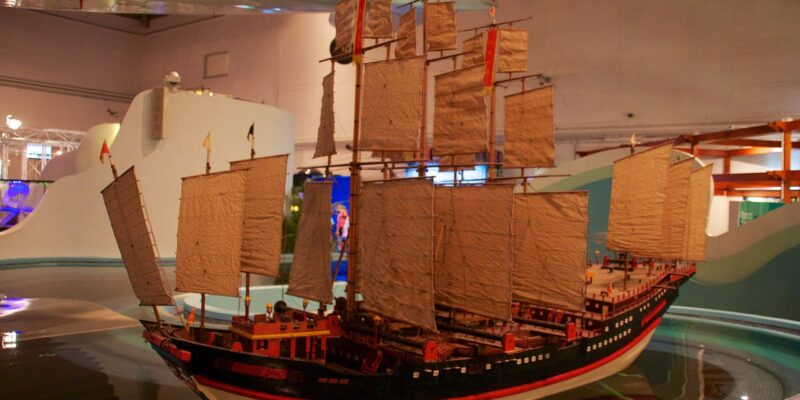
Although most mainstream historians contend that no members of Zheng He’s treasure fleet sailed further west than Kenya, a tantalizing illustration and an accompanying description drawn in the margins of a 1450 map of the Old World produced by a Venetian cartographer called Fra Mauro hint at some sort of nautical Chinese presence in the Atlantic Ocean. The image in question is a ship bearing great resemblance to a Chinese junk sailing east from the Cape of Good Hope. An accompanying description, written in Italian, tells of a ship from the Orient which was swept into the “Sea of Darkness”, or the Atlantic Ocean, by a storm in about 1420. “Nothing but air and water was seen for forty days,” the description goes, “and by their reckoning they ran 2,000 miles and fortune deserted them.” When the storm abated, the sailors of this unfortunate vessel managed to make their way back to the Cape of Good Hope, completing the return voyage in seventy days.

If a 13th Century Chinese junk was indeed swept into the Atlantic Ocean by a freak storm and carried into the Gulf Stream, it is conceivable that the occupants of such a craft may have found their way to eastern shores of North America, and up the Atlantic coast to Oak Island. If this hypothetical junk had been carrying imperial gifts in its hold, it is also conceivable that its sailors may have buried these treasures on Oak Island for safekeeping before risking a return voyage to China. Unlikely though this theory may be, it would neatly explain one of the most baffling discoveries ever made on Oak Island, namely the coconut fibre which once comprised a layer of the Smith’s Cove beach filter, which has repeatedly been carbon dated to around the 13th or 14th Centuries A.D. Recall that coconuts are not endemic to the New World but rather to Southeast Asia and the coastal regions of the Indian Ocean, and are believed to have first been introduced to the Caribbean by Portuguese explorers in the late 1400s. If 700-year-old coconut fibre was indeed deposited on Oak Island shortly after its harvesting, it almost certainly came from these regions, in which Zheng He’s treasure fleet had a strong presence. This exotic notion that the medieval Chinese might be behind the Oak Island mystery could also account for the large quantities of broken pottery found in the Money Pit at depth, precious Chinese porcelain being among the chief commodities which Zheng He bestowed upon the chiefs and monarchs with whom he treated during his voyages.
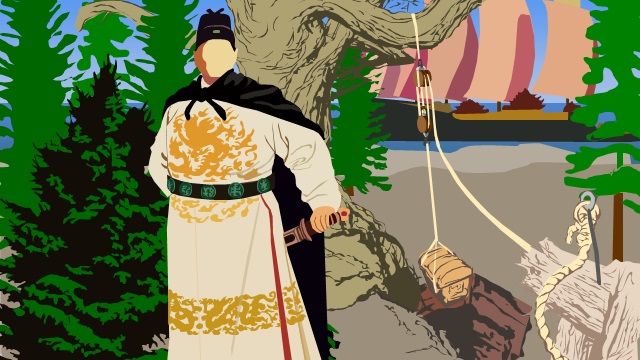
Thanks for Reading!
Thank you for reading! If you enjoyed this article and would like to help support this channel, please check out our online bookshop:
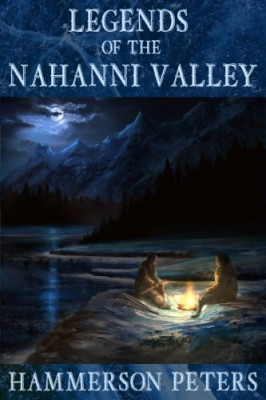
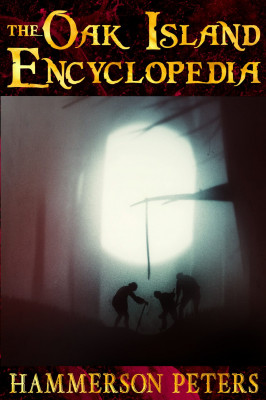
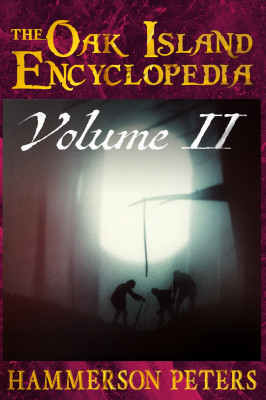
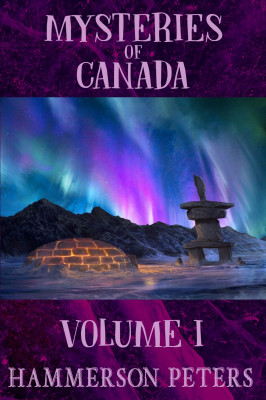
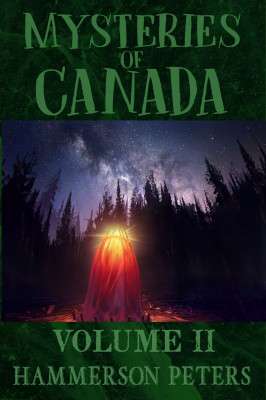
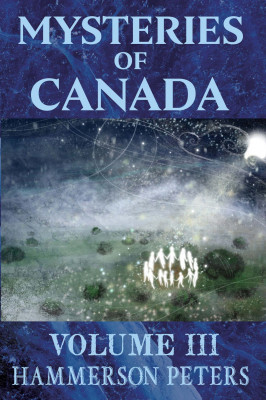
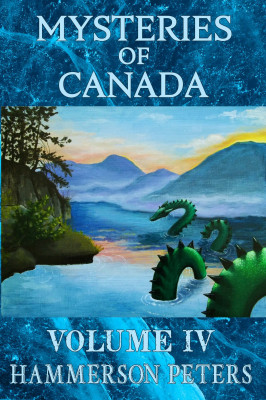


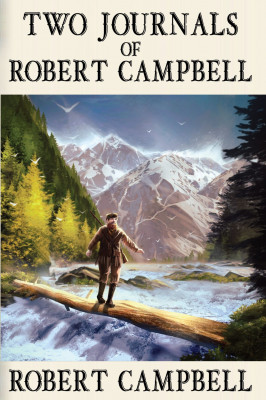
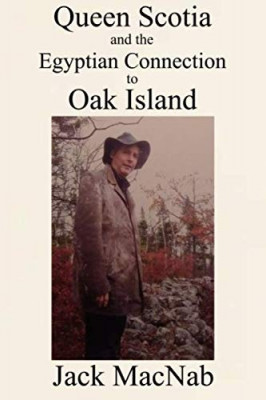
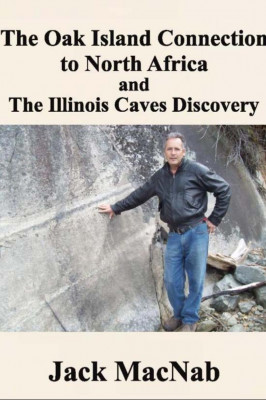
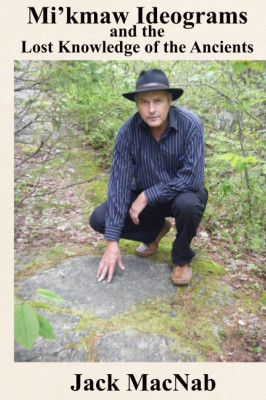
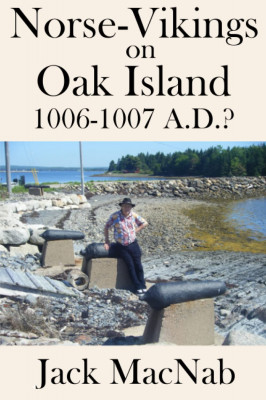
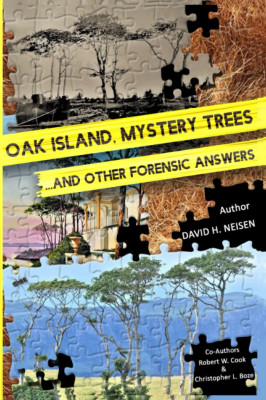
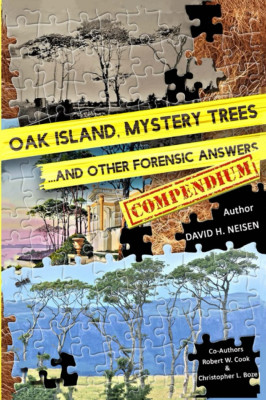
R J Daniels
If you look at any peer reviewed geological journal and read articles about anhydride they all mention the presence of pyrites often found with anhydride. The pyrites are usually only 5% of the deposit.
Pyrite has a metallic lustre with a pale brass yellow colour; hence it is often confused with gold. Therefore, it’s name: Fools Gold.
The shiny gold coloured object seen in season 3 episode 12 and the 3 yellow objects seen by the diver in this episode are pyrites.
The gold “coin” that the diver dropped was probably a pyrite that looked like a coin in the murky water of the shaft.
It is just not possible that a coin somehow got stuck in the bedrock.